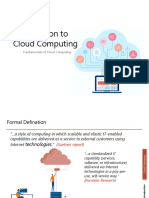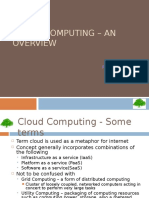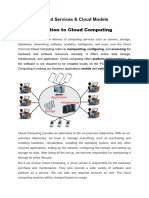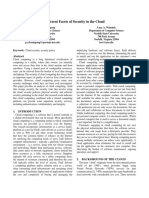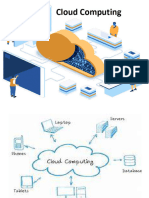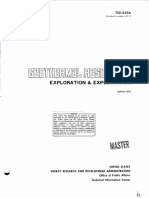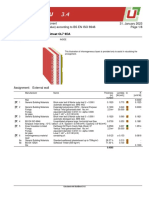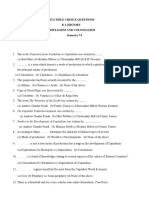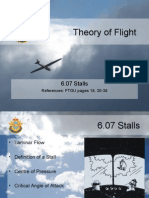cloud computing
Deep Introduction to Cloud Computing
Cloud computing is the on-demand delivery of IT resources over the internet
with pay-as-you-go pricing. Instead of owning physical data centers or
hardware, companies access computing power, storage, and databases
through cloud providers like AWS
1. Characteristics of Cloud Computing
On-demand self-service: Users can provision resources like storage and
servers without human intervention.
Broad network access: Accessible from any location via internet-
connected devices.
Resource pooling: Multiple users share resources dynamically.
Scalability: Instantly scale resources up or down based on demand.
Measured service: Pay only for what you use.
Types of Cloud and Their Differences
Cloud computing is broadly categorized into three main types based on service
offerings and deployment models. Let’s explore each type with definitions and
key differences.
1. Public Cloud
Definition:
The public cloud is a cloud infrastructure owned and operated by third-party
providers like AWS, Microsoft Azure, or Google Cloud. Resources such as
servers, storage, and networking are shared across multiple tenants
(customers).
Key Features:
Accessible over the internet
Fully managed by the cloud provider
Multi-tenant environment
cloud computing 1
� Use Cases:
Web hosting
Application development and testing
Big data processing
2. Private Cloud
Definition:
A private cloud is a cloud infrastructure dedicated to a single organization. It
may be hosted on-premises or by a third-party provider but remains isolated
from other users.
Key Features:
Greater control over resources
Single-tenant environment
Customizable for security and compliance needs
Use Cases:
Government agencies
Financial services with strict compliance needs
Large enterprises with sensitive data
3. Hybrid Cloud
Definition:
A hybrid cloud combines both public and private cloud environments, allowing
data and applications to move between them. This offers flexibility and
scalability while maintaining control over sensitive data.
Key Features:
Best of both public and private clouds
Dynamic workload movement between environments
Cost and performance optimization
Use Cases:
Disaster recovery and business continuity
cloud computing 2
� Seasonal data spikes management
Handling confidential data in private clouds while leveraging public cloud
for analytics
4. Multi-Cloud
Definition:
A multi-cloud strategy involves using services from multiple cloud providers
(like AWS, Azure, and GCP) to avoid vendor lock-in or optimize service usage.
Key Features:
Increased resilience
Best-in-class service selection
Reduced vendor dependency
Use Cases:
AI services from GCP while hosting applications on AWS
Compliance with data localization regulations
Comparison Between Cloud Types
Aspect Public Cloud Private Cloud Hybrid Cloud Multi-Cloud
Single Multiple
Ownership Cloud Provider Both
Organization Providers
Low (Pay-per- High
Cost Moderate Varies
use) (Maintenance)
High
Security Shared Balanced Varies
(Dedicated)
Scalability Highly Scalable Limited Highly Scalable Highly Scalable
Banks, Large Best-in-class
Use Case Startups
Government Enterprises services
Key Differences
1. Control and Security:
Private cloud offers the most control; public cloud has shared
infrastructure.
cloud computing 3
� 2. Cost:
Public cloud is cost-effective; private cloud requires significant
maintenance costs.
3. Scalability:
Public cloud and hybrid clouds offer greater scalability than private
cloud.
Would you like to explore hands-on projects with a specific cloud model or
further deep dive into AWS-specific public cloud services?
Types of Cloud Computing (IaaS, PaaS, SaaS)
Cloud services are categorized based on the level of abstraction they provide
to users. These categories include Infrastructure as a Service (IaaS), Platform
as a Service (PaaS), and Software as a Service (SaaS).
1. Infrastructure as a Service (IaaS)
Definition:
IaaS provides virtualized computing resources over the internet, such as
servers, storage, and networking. Users have control over operating systems
and deployed applications but not the underlying physical infrastructure.
Key Features:
On-demand scaling of resources
Pay-as-you-go pricing
Full control over operating systems and applications
Examples:
AWS EC2 (Elastic Compute Cloud): Virtual servers for hosting applications
Google Compute Engine: Virtual machines for compute workloads
Microsoft Azure Virtual Machines: Cloud-based infrastructure
Use Case:
Hosting scalable web applications
Running custom enterprise applications
Data backup and disaster recovery
cloud computing 4
� 2. Platform as a Service (PaaS)
Definition:
PaaS provides a development platform and environment for developers to
build, test, and deploy applications without managing the underlying
infrastructure.
Key Features:
Pre-configured development environments
Automatic scaling and load balancing
Integrated development tools
Examples:
AWS Elastic Beanstalk: Deploy and manage web applications
Google App Engine: Managed platform for scalable applications
Heroku: Cloud PaaS for developers
Use Case:
Rapid application development
Deploying machine learning models
Building web and mobile apps without managing infrastructure
3. Software as a Service (SaaS)
Definition:
SaaS delivers fully functional software applications over the internet,
accessible via a web browser, without the need to install or maintain hardware
and software.
Key Features:
Subscription-based model
No software installation required
Fully managed by the provider
Examples:
Gmail: Web-based email service
cloud computing 5
� Salesforce: CRM software
Dropbox: Cloud storage service
Use Case:
Collaboration tools for businesses
Customer relationship management (CRM)
Document sharing and storage
Comparison Table: IaaS vs PaaS vs SaaS
IaaS (Infrastructure PaaS (Platform as a SaaS (Software as a
Category
as a Service) Service) Service)
Provides a platform
Provides virtualized Provides fully
for developing,
infrastructure like functional software
Definition testing, and
servers, storage, and accessible over the
deploying
networks. internet.
applications.
Full control over
Control over
virtual machines, Minimal control; users
Control applications and data
storage, OS, and just use the software.
only.
networks.
Provider fully
Manage apps,
Manage hardware, manages everything,
configurations; no
Management OS, networking, and including
infrastructure
storage. maintenance and
management.
updates.
Hosting scalable web Building, testing, and
Productivity tools,
Use Cases applications, backup, deploying apps
CRM, email services.
and recovery. rapidly.
AWS EC2, Google
AWS Elastic
Compute Engine, Gmail, Salesforce,
Examples Beanstalk, Google
Azure Virtual Dropbox
App Engine, Heroku
Machines
Business users, end
User Type IT Administrators Developers
users
Pay for compute
Subscription for Subscription or per-
Cost Model resources per usage
platform usage. user pricing.
(flexible pricing).
cloud computing 6
� Requires technical
Limited technical
expertise to No technical setup
Accessibility complexity for
configure and required.
developers.
maintain.
AWS Global Infrastructure
AWS (Amazon Web Services) operates one of the world's largest and most
secure global cloud infrastructures to provide scalable, reliable, and highly
available services. Let's break it down topic by topic.
1. Regions
Definition:
A region is a physical geographic location where AWS clusters its data centers.
Key Points:
AWS currently has 30+ regions globally, each serving a specific area.
Each region is isolated from others to ensure high fault tolerance and low
latency.
Examples:
US East (N. Virginia)
Asia Pacific (Mumbai)
Europe (Frankfurt)
Use Case:
Choose the region closest to your customers for better performance and
compliance with local regulations.
2. Availability Zones (AZs)
Definition:
An Availability Zone (AZ) is a physically distinct data center within a region,
connected by low-latency, redundant networking.
Key Points:
Each region consists of 2 to 6 Availability Zones.
AZs are isolated but connected via high-speed private fiber-optic links.
cloud computing 7
� Example: us-east-1a, us-east-1b
Use Case:
Distributing applications across multiple AZs ensures high availability and
fault tolerance.
3. Edge Locations
Definition:
Edge locations are endpoints for AWS CloudFront (CDN) to cache and serve
content closer to end users.
Key Points:
AWS has 450+ edge locations globally.
They reduce latency by caching static and dynamic content.
Use Case:
Deliver content like images and videos with low latency through CloudFront.
4. Local Zones
Definition:
Local Zones are extensions of AWS Regions that place compute, storage, and
other services closer to large metropolitan areas.
Key Points:
Used when ultra-low latency is required for certain workloads.
Example: Local Zone in Los Angeles
Use Case:
Ideal for real-time gaming, video editing, and media streaming.
5. AWS Outposts
Definition:
AWS Outposts bring AWS services to your on-premises data center for a
consistent hybrid cloud experience.
Key Points:
cloud computing 8
� Fully managed by AWS but physically located in customer facilities.
Used for low-latency and data residency requirements.
Use Case:
Ideal for industries like healthcare and finance with strict compliance
needs.
6. Wavelength Zones
Definition:
Wavelength Zones embed AWS compute and storage services within
telecommunication provider data centers for ultra-low latency 5G applications.
Use Case:
Ideal for IoT devices, smart factories, and autonomous vehicles.
Benefits of AWS Global Infrastructure
High Availability: Redundant architecture across AZs.
Scalability: Instantly scale resources globally.
Low Latency: Edge locations and local zones ensure faster service
delivery.
Compliance: Regions help meet data residency regulations.
AWS Shared Responsibility Model
The AWS Shared Responsibility Model outlines the division of responsibilities
between AWS and its customers for ensuring security and compliance in the
cloud.
1. AWS Responsibilities (Security of the Cloud)
AWS is responsible for securing the underlying infrastructure that powers all its
services. This includes:
Physical Security:
Protection of data centers from unauthorized access.
Redundant power and environmental controls.
cloud computing 9
� Network Security:
DDoS protection and secure AWS Global Infrastructure.
Isolation of customer resources through VPC (Virtual Private Cloud).
Hardware and Software:
Maintenance and security updates for servers, storage, and networking
components.
Monitoring and auditing compliance.
Examples:
Protecting physical server locations.
Maintaining hypervisors and hardware security patches.
2. Customer Responsibilities (Security in the Cloud)
Customers are responsible for managing and securing their resources within
the AWS environment. This includes:
Data Security:
Encrypting data at rest and in transit.
Data backup and disaster recovery.
Identity and Access Management:
Configuring IAM roles and permissions correctly.
Using Multi-Factor Authentication (MFA).
Application Security:
Updating and patching operating systems and applications.
Compliance:
Ensuring compliance with industry-specific regulations.
Examples:
Configuring security groups to control traffic to EC2 instances.
Ensuring secure key management for encrypted S3 buckets.
Key Concept: Shared Responsibility by Service Type
cloud computing 10
� Service Type AWS Responsibility Customer Responsibility
Hypervisor, data center, OS patching, firewall rules, app
IaaS (EC2)
networking security
PaaS (RDS) Database engine patching Data encryption, access control
SaaS Entire infrastructure and
User access management
(WorkDocs) application
Best Practices for Customers
1. Use IAM roles and policies: Avoid using root accounts.
2. Encrypt sensitive data: Both at rest and in transit.
3. Monitor resources: Use AWS CloudWatch and AWS Config.
4. Enable logging: Use CloudTrail for auditing.
5. Secure networking: Configure VPCs and security groups carefully.
Overview of the AWS Well-Architected Framework
The framework is structured around
six pillars
, each addressing critical aspects of cloud architecture:
1. Operational Excellence: Focuses on running and monitoring systems to
deliver business value. It emphasizes continuous improvement and
operational insights.
2. Security: Aims to protect the confidentiality, integrity, and availability of
data and systems. This includes implementing measures such as
encryption, identity management, and threat detection.
3. Reliability: Ensures a system can recover from failures and meet customer
demands. This pillar emphasizes fault tolerance and the ability to scale.
4. Performance Efficiency: Involves using resources efficiently to meet
system requirements while adapting to changing demands.
5. Cost Optimization: Focuses on controlling costs while maximizing the value
of cloud investments.
cloud computing 11
� 6. Sustainability: Addresses environmental impacts by promoting efficient
resource use and minimizing waste
cloud computing 12













